
|
Jason deCaires Taylor’s underwater sculptures create a unique, absorbing and expansive visual seascape. Highlighting natural ecological processes, Taylor’s interventions explore the intricate relationships that exist between art and environment. His works become artificial reefs, attracting marine life, while offering the viewer privileged temporal encounters, as the shifting sand of the ocean floor, and the works change from moment to moment. |
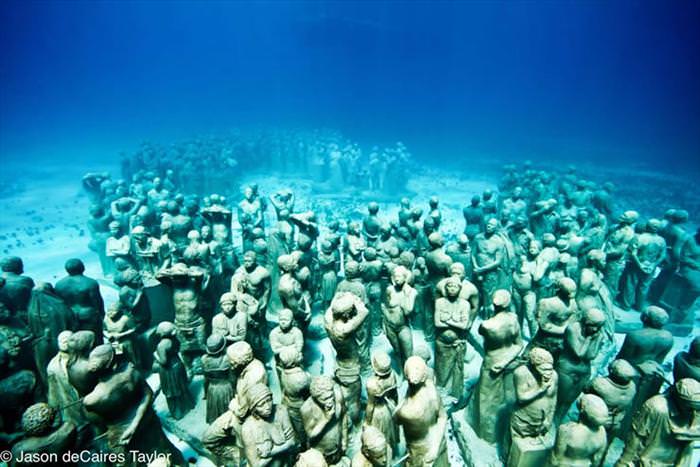 |
|
Taylor has gained significant interest and recognition for his unique work, with features in over 1000 publications around the world, including National Geographic, Vogue, USA today, the BBC, and CNN and he has made several TV appearances.
|
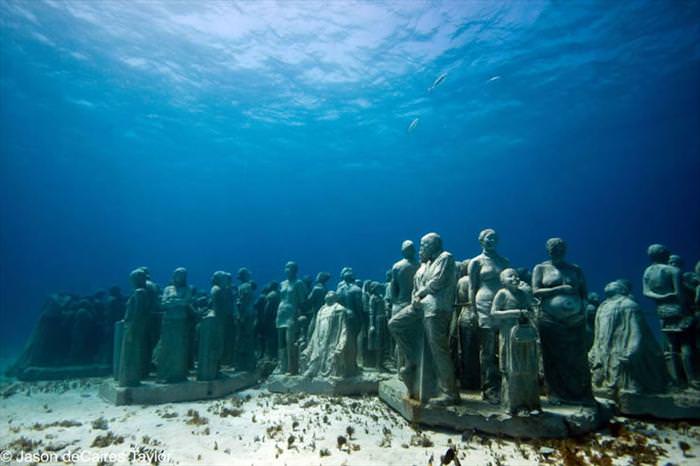 |
|
His international reputation was established in May 2006, when he created the world’s first underwater sculpture park in Grenada, West Indies, leading to both private and public commissions. Taylor is currently founder and Artistic Director of the Museo Subacuático del Arte (MUSA) in Cancun, Mexico. |
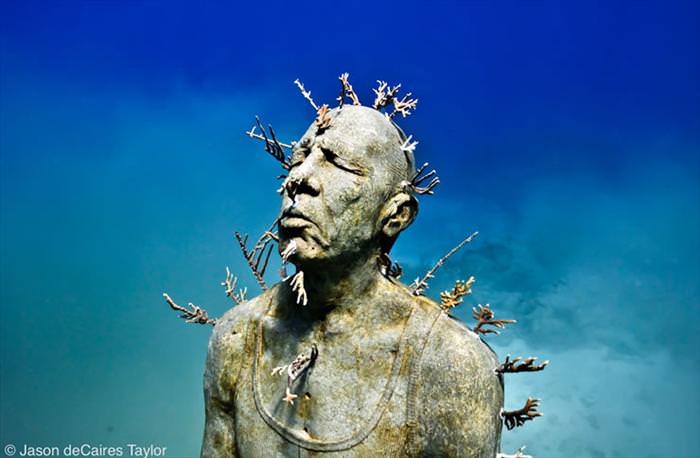 |
|
|
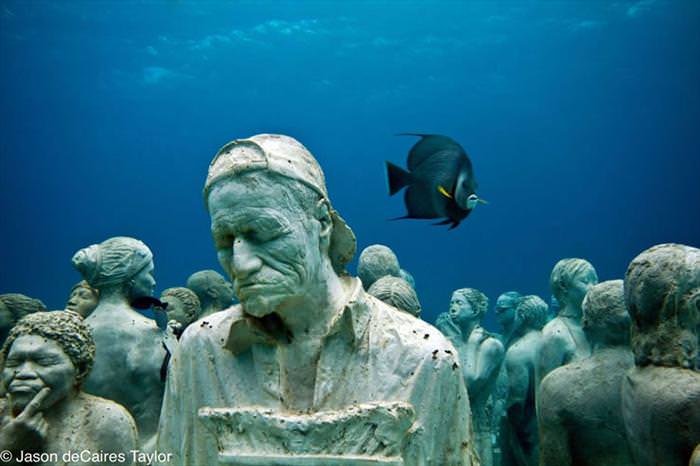 |
|
|
 |
|
|
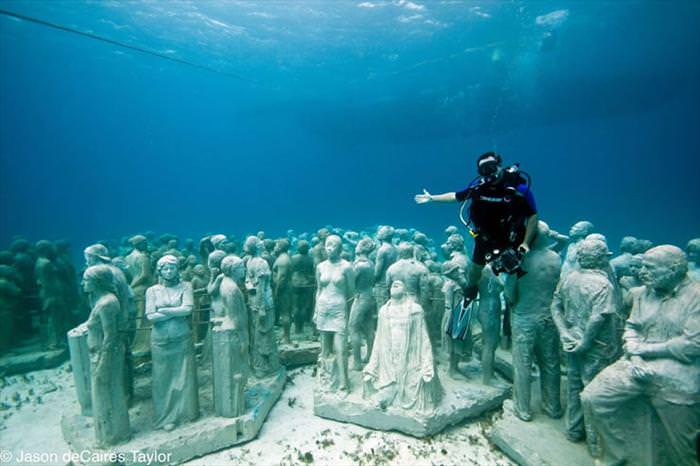 |
|
|
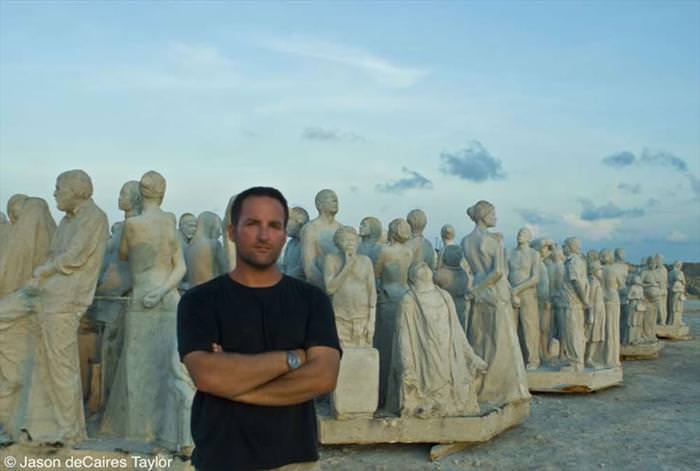 |
|
|
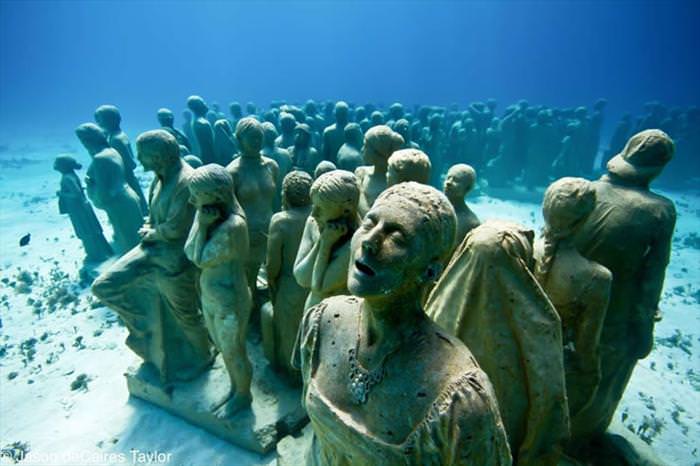 |
|
|
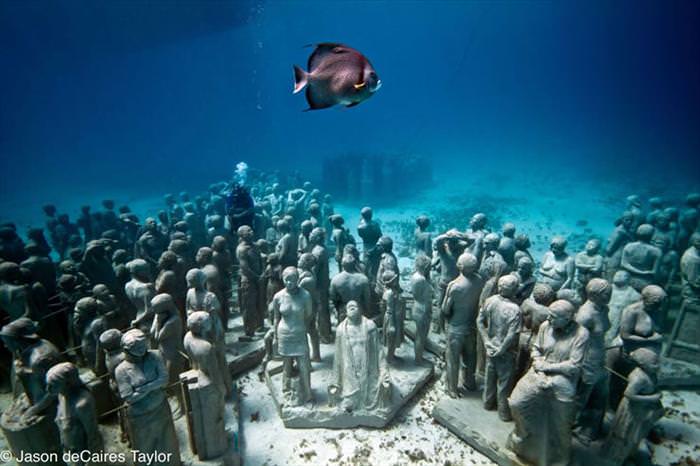 |
|
VICISSITUDES
Vicissitudes depicts a circle of figures, all linked through holding hands. These are life-size casts taken from a group of children of diverse ethnic background. Circular in structure and located five meters below the surface, the work both withstands strong currents and replicates one of the primary geometric shapes, evoking ideas of unity and continuum.
|
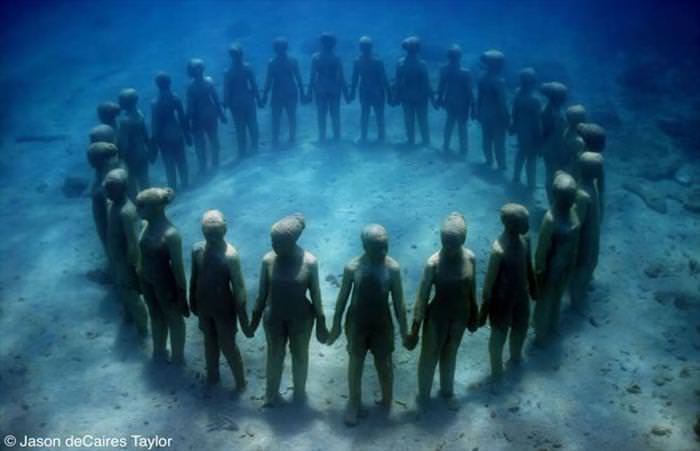 |
|
The underwater environment is much like that of the outdoors. An object is subject to changes in light and prevailing weather conditions. The cement finish and chemical composition of Vicissitudes actively promotes the colonisation of coral and marine life.
|
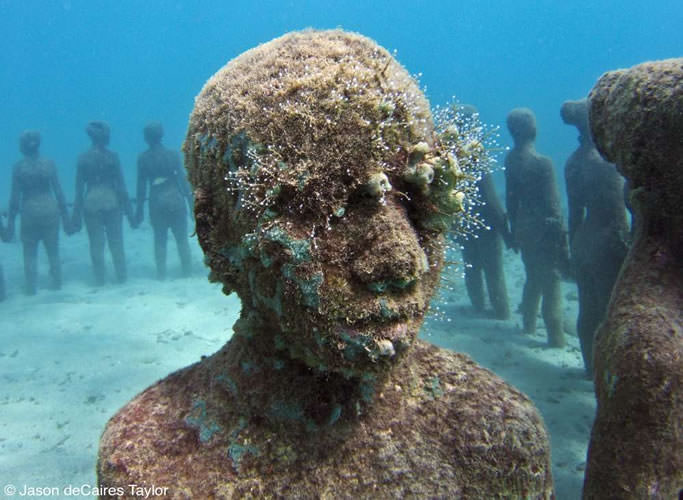 |
|
The figures are transformed over time by their environment, and conversely as this happens so they change the shape of their habitat. This natural process echoes the changes exacted through growing up. Social interchange shapes this process, while conversely as the product of a particular society we in turn invoke change on the workings and dynamics of that environment.
|
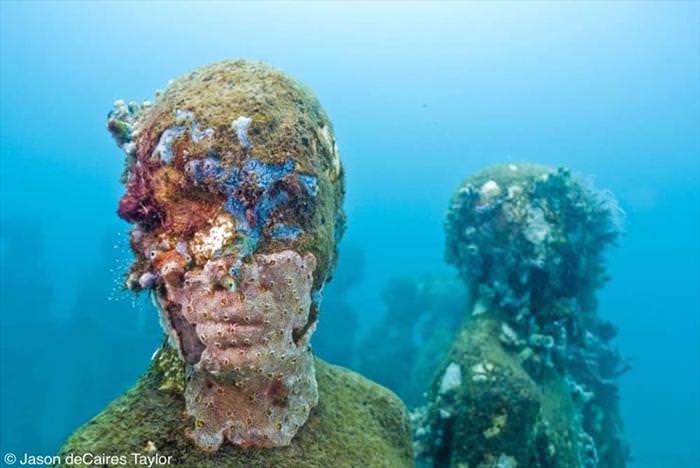 |
|
|
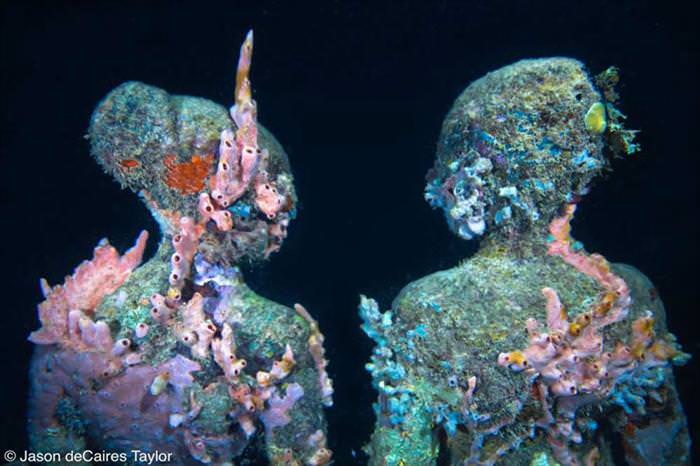 |
|
The sculpture proposes growth, chance, and natural transformation. It shows how time and environment impact on and shape the physical body. Children by nature are adaptive to their surroundings. Their use within the work highlights the importance of creating a sustainable and well-managed environment, a space for future generations.
|
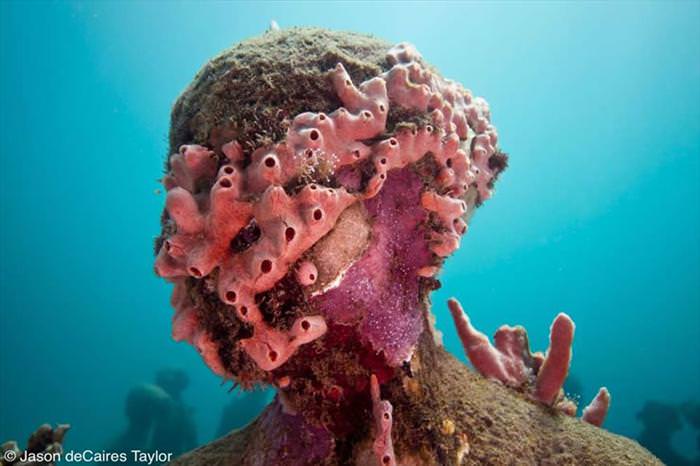 |
|
Taylor notes that close to forty percent of coral reefs worldwide has been destroyed and that this figure is set to increase. His work reminds us that the marine environment is in a constant state of flux, and that this in turn reflects poignantly the vicissitudes, changing landscapes, of our own lives. |
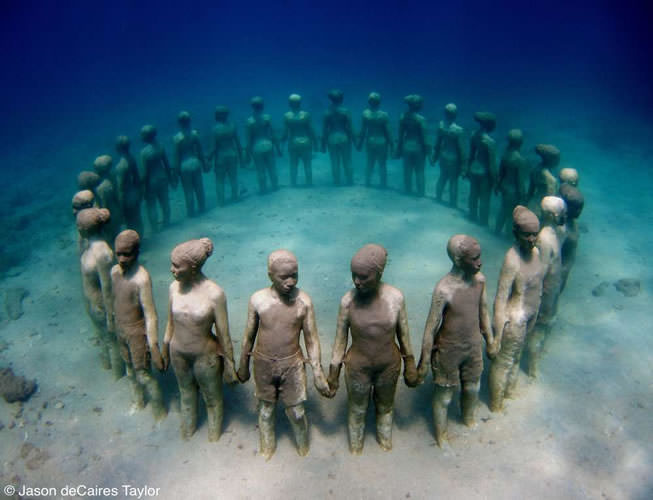 |
|
THE LOST CORRESPONDENT
The Lost Correspondent depicts a man sitting at a desk with a typewriter. The desk is covered with a collection of newspaper articles and cuttings that date back to the 1970s. Many of these have political significance, a number detail Grenada’s alignment with Cuba in the period immediately prior to the revolution. |
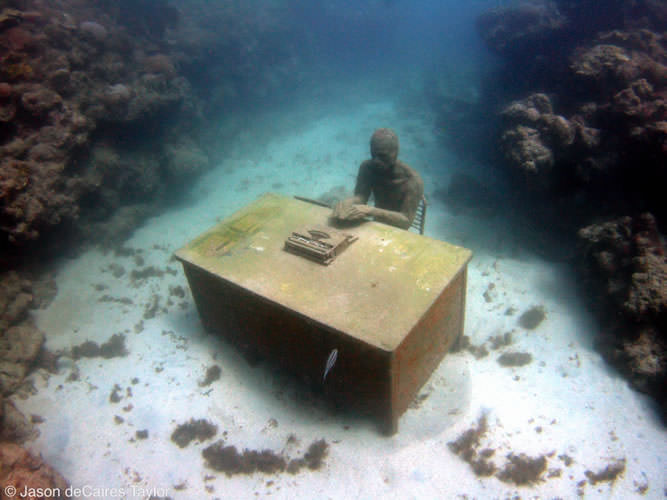 |
|
The work informs the rapid changes in communication between generations. Taking the form of a traditional correspondent, the lone figure becomes little more than a relic, a fossil in a lost world. |
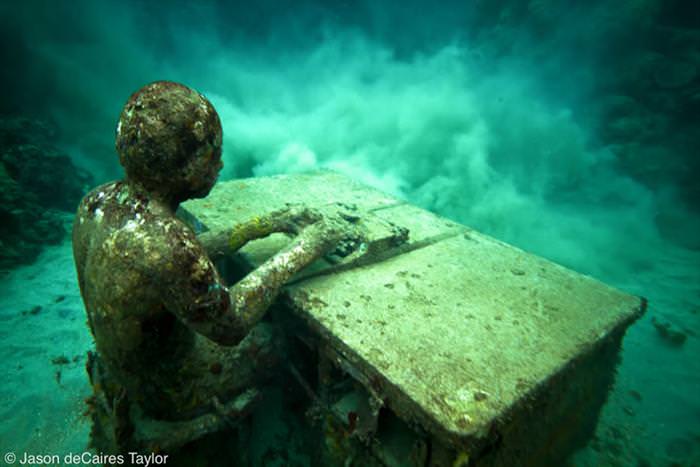 |
|
|
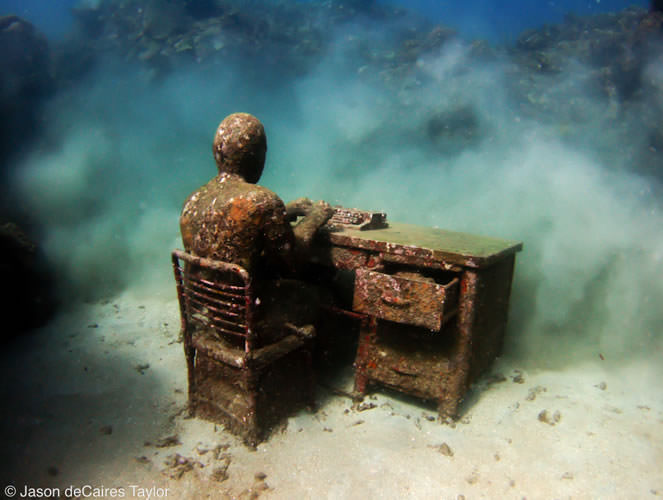 |
|
THE GARDENER OF HOPE
La Jardinera de la Esperanza (the gardener of hope), depicts a young girl lying on garden patio steps, cultivating a variety of plant pots. The sculpture is sited four metres beneath the surface Punta Nizuc, Cancun. |
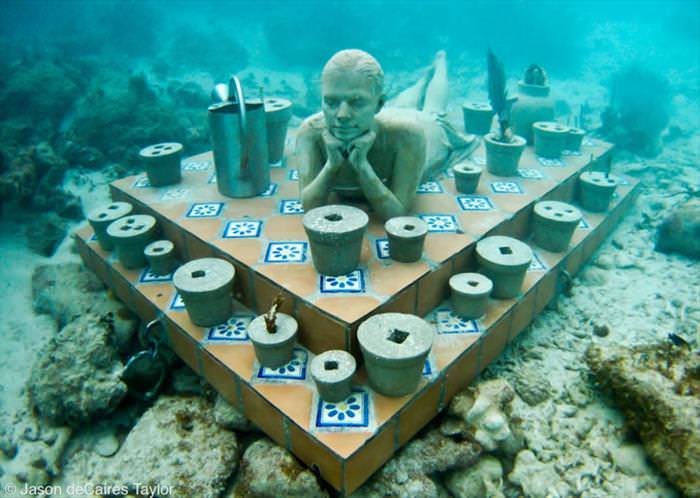 |
|
The pots are propagated with live coral cuttings rescued from areas of the reef system damaged by storms and human activity. This technique, a well-established procedure in reef conservation, rescues damaged coral fragments by providing a suitable new substrate. |
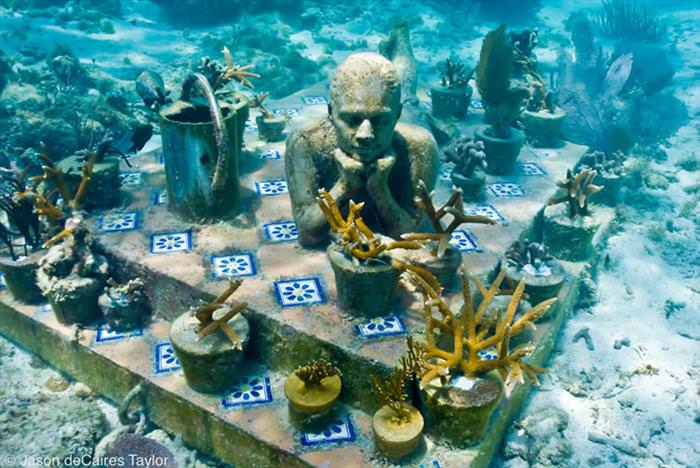 |
|
THE ARCHIVE OF LOST DREAMS
The Archive of Lost Dreams depicts an underwater archive, maintained by a male registrar. The archive is a collection of hundreds of messages in bottles brought together by the natural forces of the ocean. The registrar is collating the individual bottles and categorising the contents according to the nature of each message – fear, hope, loss, or belonging.
|
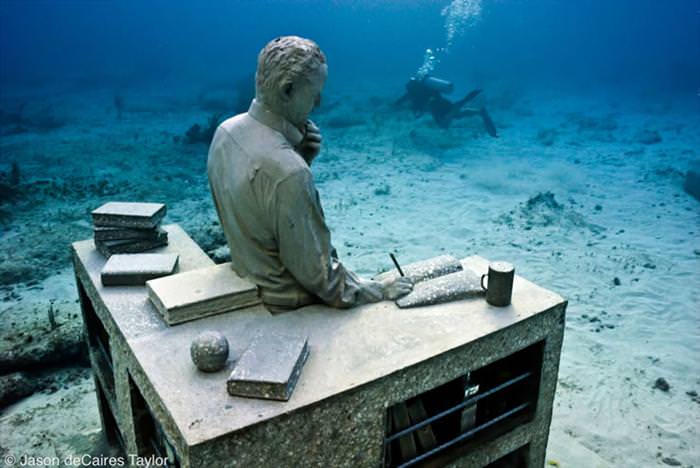 |
|
|
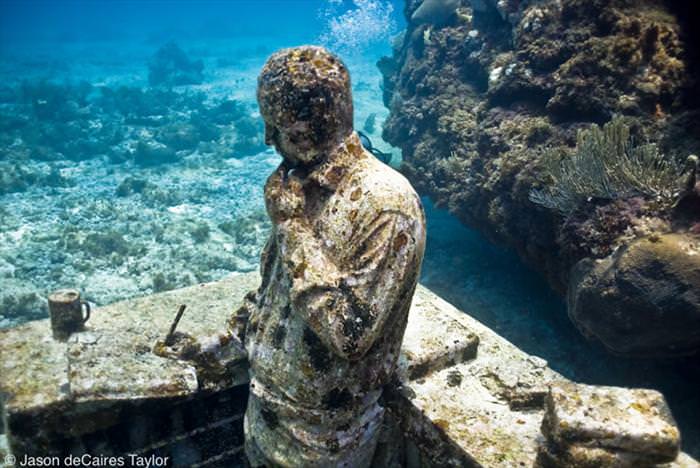 |
|
|
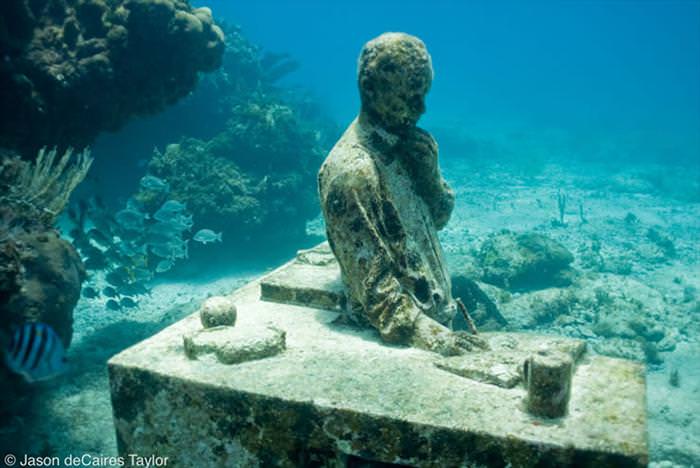 |
|
Oceans teem with microscopic organisms that are constantly drifting down towards the sea bed, attaching to and colonising on the way any hard secure surface, such as rock outcrops, and thereby creating the basis of a natural reef. Coral reefs attract an array of marine life (such as colourful fish, turtles, sea urchins, sponges, and sharks) and also provide enclosed spaces for sea creatures to breed or take refuge. |
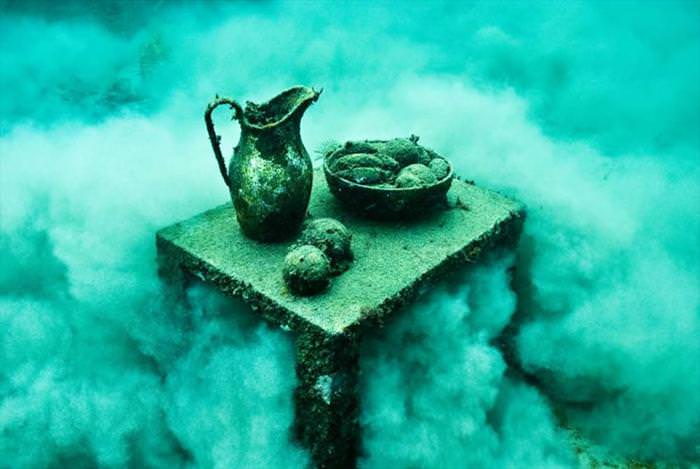 |
|
|
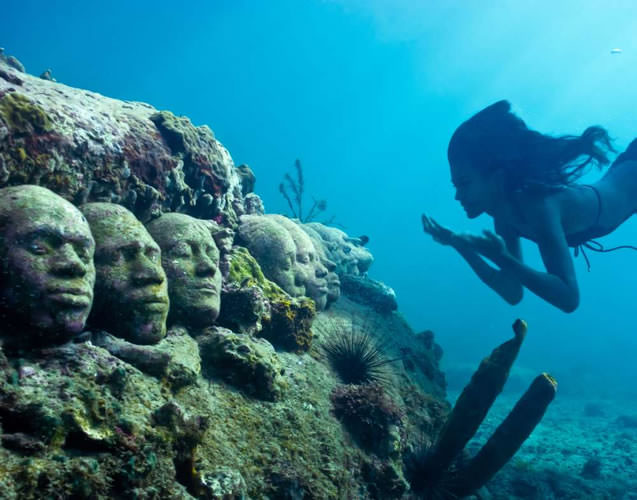 |
|
|
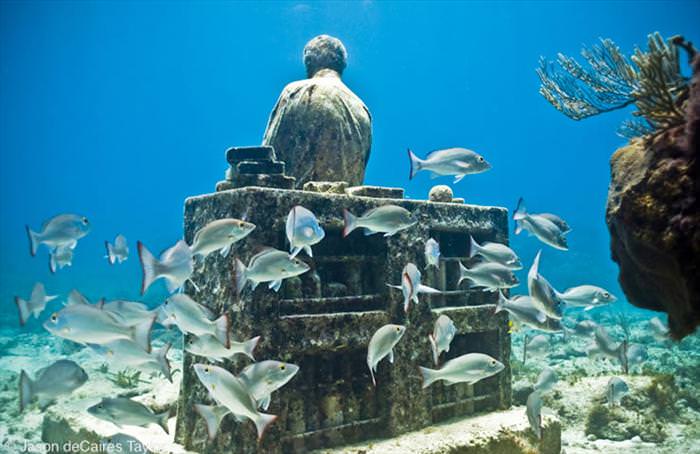 |
|
|
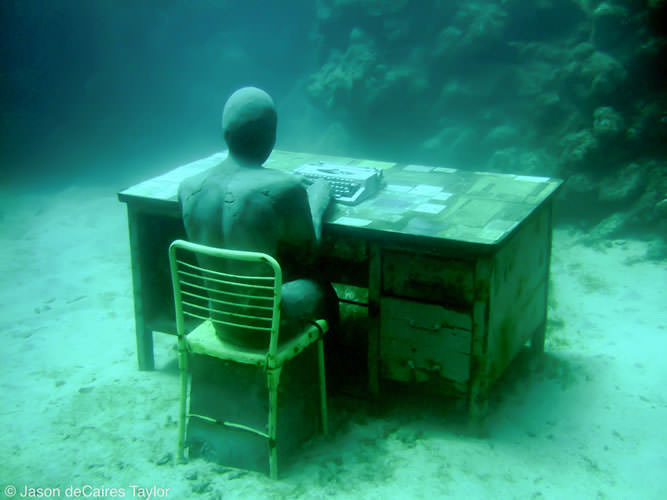 |
|
|
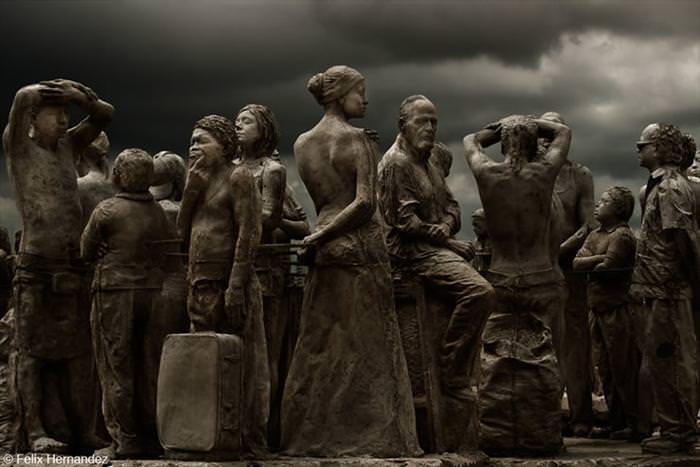 |
|
|
 |
|
|
 |
|
|
Submitted by: Christian K.